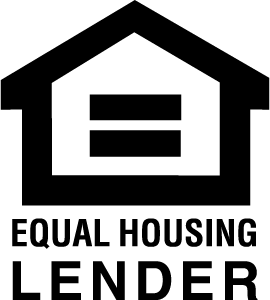
Key insights
- Even if you aren’t planning on selling until spring, there are still plenty of tasks you can accomplish to get your home ready for listing.
- Spend your indoor time deep cleaning and decluttering your space.
- Whether it’s a DIY project or a professional remodel, use the next few months to do some home updates so you can space out your payments and timelines.
- Start assembling all your important home documents, like owner’s manuals and tax documents.
- Find a REALTOR® who can help you on your home-selling journey.
Selling during the winter in the Midwest isn’t always appealing. Between chilling temps, snowstorms and holiday gatherings, there’s plenty going on to keep you indoors and busy. And while it’s totally possible to celebrate the season, schedule showings, sell and move, it’s understandable if you’d rather wait for warmer temps.
Whether you’re thinking of downsizing or planning a move up into a home that better fits your family, there are certain goals you’ll need to meet before you sell and steps you’ll need to take to start the selling process.
If you’ve decided to sell, but are waiting for the spring to avoid the holiday hustle and winter mayhem, there are still plenty of things you can do to get listing ready. Here are a few projects to consider taking on while you’re hunkered down at home.
Clean and declutter
Cleaning now might seem like a waste — after all, your space isn’t going to stay clean for months — but there are plenty of places that you might ignore or that could use a deep cleaning now. Then, come spring, you’ll only have to touch them up. Cleaning now also allows you to get a fuller picture of what you own, so you can start the decluttering and organizing process.
Decluttering your home not only makes it feel more spacious but will help ensure that you’re not bringing things you don’t want or need into your new home. Doing this early will help you feel less panicked (plus, it gives you the extra time to say goodbye to the more sentimental parts of your home).
While you’re cleaning things up and putting them away, it’s a good time to reevaluate your storage. (Remember that having ample storage space is a key essential that buyers look for.) If you’re finding items that you want to keep but are taking up valuable space, you might consider packing them up and moving to a storage unit. This process will also help with staging when the time comes for showings.
You’ll still have to do a good spring cleaning before listing, and you’ll have to keep your space nice and tidy during showings, but getting a head-start on deep cleaning and decluttering will save you a lot of time later.
Make repairs and improvements
Chances are, your home probably needs a few quick fixes. Since you’re probably unable to work on your curb appeal, start with some small indoor projects. Painting a room a neutral color, unclogging slow-moving drains or fixing a creaky stair are some quick fixes that can help you build momentum in getting your home in order.
Larger projects, like remodeling a room or updating a kitchen, are bigger financial projects that could involve contractors and longer timelines. Starting now allows you to space out your purchases and costs and ensure you have plenty of time built in for setbacks and finding the right specialist or product.
As you’re going through your home and making updates, you’ll also want to note any issues you’re not fixing for your disclosures — something your REALTOR can help you with.
Get your papers in order
While in the midst of decluttering and making updates, keep your eye out for owner's manuals, paint colors, manufacturer information and other documentation that the next homeowner may want.
It’s also helpful to assemble some of your insurance documents, as insurance coverage and rates have become a larger concern for buyers. Your future potential buyers may have questions about your policy and premiums, or about certain factors about the home that could impact insurance coverage.
You can also start to consider what papers and forms you’ll need down the road when you’re at the closing table, like property tax receipts and proof of repairs.
Find a REALTOR
Having an expert REALTOR in your corner can be crucial to your success. A REALTOR will help you determine how to price your home, how to effectively market it and make sure all the “I”s are dotted and “T”s are crossed, just to name a few of the advantages. The selling process can be complicated, and a licensed REALTOR has the training and experience needed to help pave the way for a quick sale at the highest price with the least amount of stress.
Get in touch
If you’re ready to get started on your selling journey, reach out. I can provide recommendations and do a property analysis to help you determine your home’s value.











 ©2025 Prosperity Home Mortgage LLC®. (877) 275-1762. 3060 Williams Drive, Suite 600, Fairfax, VA 22031. All first mortgage products are provided by Prosperity Home Mortgage, LLC®. Not all mortgage products may be available in all areas. Not all borrowers will qualify. NMLS ID #75164 (For licensing information go to: NMLS Consumer Access at
©2025 Prosperity Home Mortgage LLC®. (877) 275-1762. 3060 Williams Drive, Suite 600, Fairfax, VA 22031. All first mortgage products are provided by Prosperity Home Mortgage, LLC®. Not all mortgage products may be available in all areas. Not all borrowers will qualify. NMLS ID #75164 (For licensing information go to: NMLS Consumer Access at